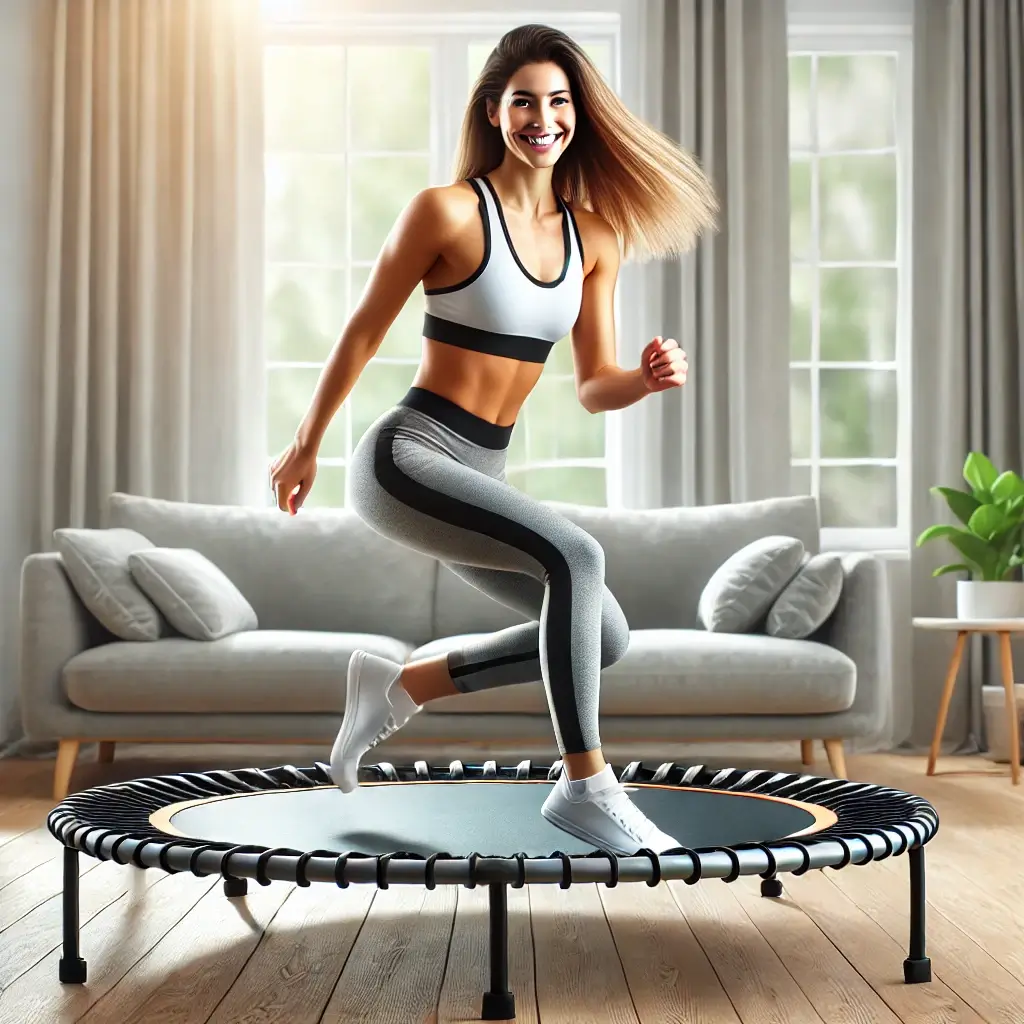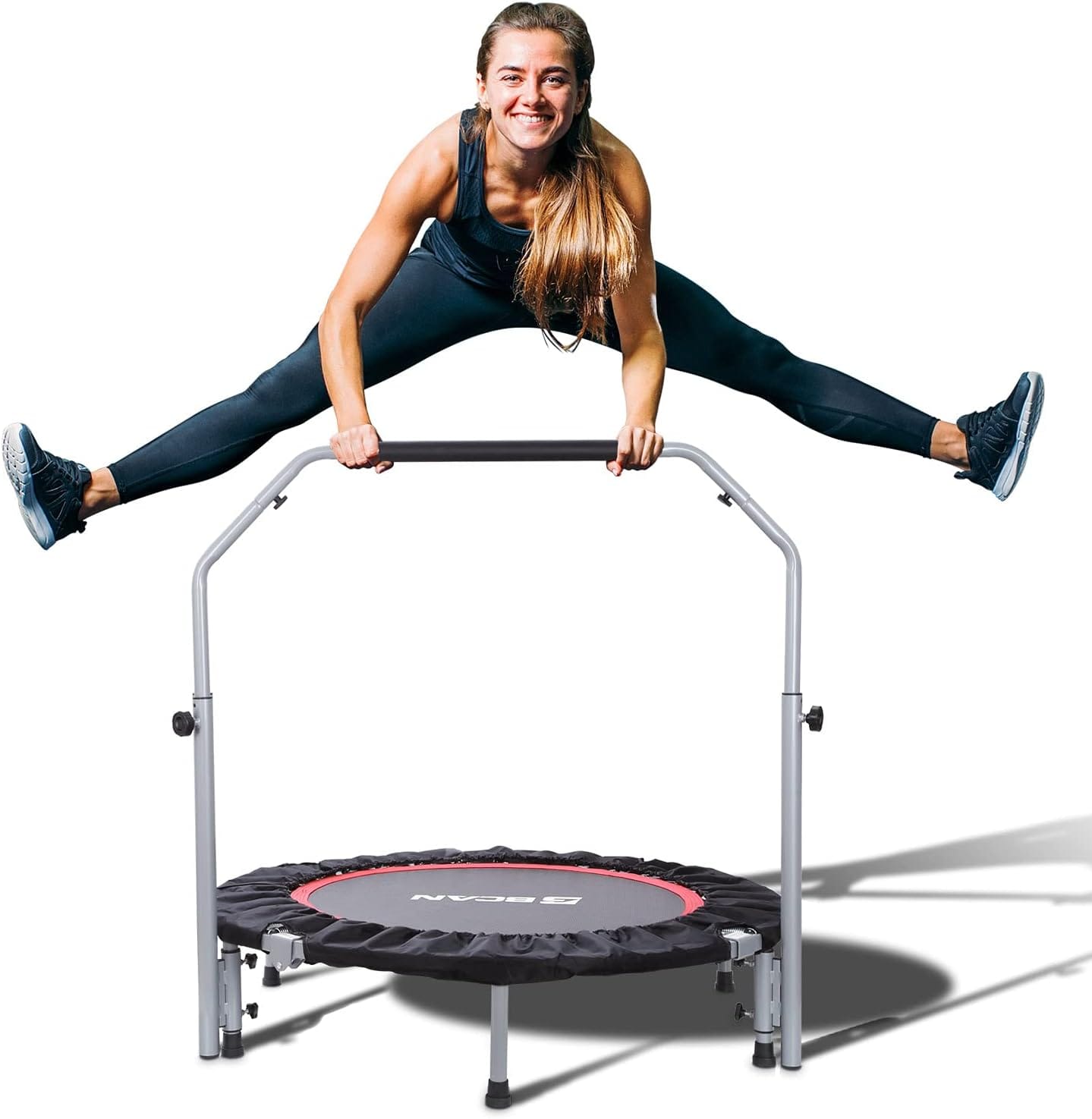Jump for Joy! Why Rebounding is the Secret to Feeling Amazing!
Rebounding is the secret! Boost your fitness, metabolism, and mood—all while bouncing! Rebounding strengthens your heart, supports lymphatic drainage, builds bone density, and improves balance, all without stressing your joints. Ready to jump into better health? Let’s bounce! 🚀✨
The Science-Backed Benefits of Rebounding: Why This Low-Impact Workout Is a Game Changer
If you’re looking for a fun, effective, and joint-friendly way to boost your fitness, rebounding might just be the perfect workout for you. This simple exercise—bouncing on a mini-trampoline—packs a powerful punch when it comes to improving cardiovascular health, enhancing lymphatic drainage, supporting bone density, and even boosting mental well-being.
Rebounding is no longer just a nostalgic throwback to childhood; it has become a favorite among fitness enthusiasts, longevity seekers, and those looking for a full-body, low-impact exercise that delivers big results. Let’s dive into the incredible benefits of rebounding and why you should consider making it part of your fitness routine.

1. Enhances Lymphatic Drainage and Detoxification
One of the most unique benefits of rebounding is its ability to stimulate the lymphatic system, which plays a crucial role in immune function and detoxification. Unlike the cardiovascular system, which has a pump (the heart) to move blood, the lymphatic system relies on movement and muscle contractions to circulate lymph fluid. The up-and-down motion of bouncing on a rebounder creates a gravitational pull that helps flush out toxins, reduce inflammation, and improve immune response.
Why it matters: A sluggish lymphatic system can lead to water retention, bloating, fatigue, and increased susceptibility to illness. Rebounding naturally supports your body’s ability to eliminate waste and maintain optimal health.
2. Boosts Cardiovascular Health Without Stressing Joints
Rebounding is a low-impact cardiovascular workout that provides the same heart-pumping benefits as running—without the high impact on your joints. Studies show that just 10 minutes of bouncing on a mini-trampoline is as effective as a 30-minute jog in improving aerobic fitness, circulation, and endurance.
Key benefits:
- Strengthens the heart and lungs
- Improves blood circulation and oxygen delivery
- Reduces blood pressure and improves cholesterol levels
- Enhances endurance and stamina
Because rebounding absorbs up to 80% of the impact that would otherwise stress your knees, ankles, and hips, it’s a great choice for people recovering from injuries or dealing with joint pain.
3. Increases Bone Density and Supports Joint Health
Worried about osteoporosis or weak joints? Rebounding is a weight-bearing exercise that helps build and maintain bone density, reducing the risk of fractures and osteoporosis. The repeated force of bouncing encourages bone-strengthening cellular activity, making it a powerful, low-impact alternative to high-impact workouts like running or jumping rope.
Rebounding also strengthens the ligaments, tendons, and muscles surrounding your joints, promoting stability and reducing the risk of injuries. This makes it an excellent exercise for older adults looking to maintain mobility, flexibility, and balance as they age.

4. Boosts Metabolism and Aids in Weight Loss
Want to burn calories efficiently without overtaxing your body? Rebounding boosts metabolism, engages multiple muscle groups, and triggers fat-burning mechanisms, making it an effective tool for weight management. Because it activates the lymphatic system, it also helps eliminate excess fluids and reduce bloating.
Studies suggest that rebounding burns more calories per minute than jogging, making it an excellent choice for those looking to shed fat while maintaining lean muscle mass. It also improves insulin sensitivity and blood sugar regulation, which is key for preventing diabetes and metabolic disorders.

5. Improves Balance, Coordination, and Core Strength
Rebounding requires stability, coordination, and control, all of which engage your core muscles, including your abs, lower back, and pelvic floor. Over time, regular practice improves your proprioception (your body’s sense of position and movement), leading to better balance and agility.
This is especially beneficial for older adults who want to prevent falls, athletes looking to improve reaction time, and anyone recovering from an injury needing neuromuscular re-education.

Our Top Pick: The Best Rebounder for an Effortless, Low-Impact Workout
Looking for the ultimate mini-trampoline to elevate your rebounding routine? We love the BCAN Foldable Mini Trampoline Rebounder, available on Amazon, for its durability, smooth bounce, and joint-friendly design. With high-quality bungee cords, a sturdy frame, and a non-slip surface, this rebounder delivers a whisper-quiet, low-impact workout that’s perfect for boosting cardiovascular health, lymphatic drainage, and core strength. Whether you're a beginner or an advanced user, this rebounder provides just the right amount of support and flexibility to make every bounce count.

6. Supports Longevity and Cellular Health
Rebounding does more than just improve fitness—it promotes longevity on a cellular level. The gentle bouncing stimulates the mitochondria (the energy centers of your cells), improving cellular function, energy production, and anti-aging processes.
Additionally, the rhythmic movement helps regulate cortisol and stress hormones, leading to lower inflammation, improved sleep, and increased resilience to oxidative stress. This means better aging, stronger immunity, and reduced risk of chronic diseases like heart disease, diabetes, and neurodegenerative conditions.

7. Boosts Mood, Reduces Stress, and Enhances Mental Clarity
Exercise is a known mood-booster, but rebounding takes it to the next level. The bouncy, rhythmic movement releases endorphins, the brain’s natural “feel-good” chemicals, while simultaneously reducing cortisol levels.
Rebounding also improves circulation to the brain, enhancing mental clarity, focus, and memory. Many people find it to be a meditative practice, providing a mental reset while alleviating symptoms of anxiety and depression.
8. Promotes Digestive Health and Reduces Bloating
If you struggle with digestive issues, rebounding might be your new best friend. The gentle bouncing stimulates peristalsis, the wave-like movement of the intestines that aids in digestion and regular bowel movements. The increased circulation also supports gut health, reducing bloating and promoting efficient nutrient absorption.
Added bonus: Because rebounding supports lymphatic flow, it also helps reduce water retention and swelling, making it an excellent tool for anyone dealing with digestive sluggishness or bloating.

9. Convenient, Fun, and Easy to Incorporate Into Any Lifestyle
One of the biggest perks of rebounding is its convenience. A mini-trampoline takes up minimal space, and just a few minutes of bouncing can deliver huge health benefits. Whether you use it as a warm-up, cool-down, full workout, or active recovery, it fits seamlessly into any fitness routine.
Getting started:
- Beginners can start with gentle bouncing for 5-10 minutes and gradually increase the intensity.
- Intermediate and advanced users can incorporate squats, high knees, and even light hand weights for added resistance.
- Seniors and those with joint concerns can enjoy a light, health-boosting bounce without fear of impact injuries.

Final Thoughts: Is Rebounding Worth the Hype?
Absolutely! Whether you’re looking to improve cardiovascular health, detoxify your body, boost metabolism, strengthen bones, enhance mental well-being, or simply have fun while working out, rebounding checks all the boxes. It’s a low-impact, high-benefit exercise suitable for all ages and fitness levels.
So, why not give it a try? Your body—and your mind—will thank you for it!
You Might Also Enjoy Reading This!




Disclaimer
Each of these products has been very carefully reviewed and selected by us at WellnessWishlist. All opinions in this article are our own, and we're proud to share them with you, however, all content is meant only to be informative and should not be taken as medical advice, nor used to diagnose, treat, and or prevent any health conditions. As Amazon associates, we may collect compensation from the affiliate links on this page, through qualifying purchases (that's how we stay in business). We truly hope you enjoy finding the next addition to your WellnessWishlist!






